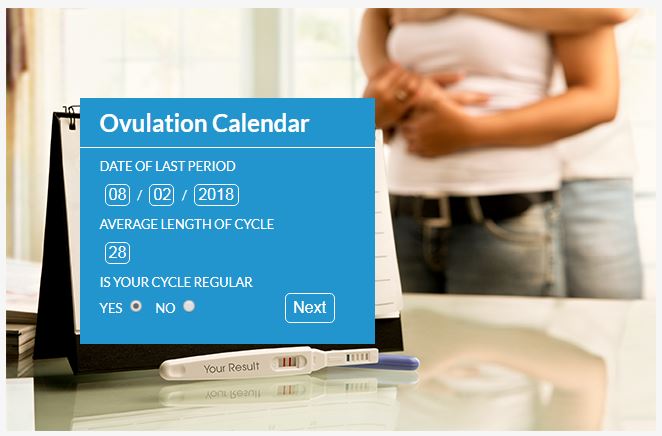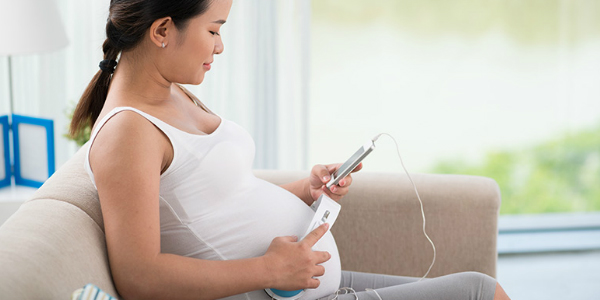Pregnancy technology: Using the digital revolution to empower your maternity term
From being a small blip on an ultrasound screen to a big and beautiful belly bump, there’s a lot going on during a pregnancy for mothers. In times past, there was a lot of strange and quirky maternity advice out there for moms; from Russian and Chinese women being told not to cut their hair during gestation, to Western doctors promoting tobacco smoking as a way to relax during pregnancy.
These days, women are more aware of how to truly stay healthy, and even more are looking for ways to be proactive in their own care of their body and child. At the Baby Tech Summit earlier this year, co-host The Bump revealed figures from it’s Moms & Tech survey that showed 76% of women said they consider technology to be an important factor when shopping for baby products.
The birthing industry is big business, and it’s listening to today’s mothers. The market is constantly receiving new and innovative pregnancy technology solutions that aim to make the whole period easier and less stressful for mothers. In this week’s article, Pacific Prime Thailand is going to take a closer look at some of these pieces of technology so that you’re more informed when it comes to your maternity period.
The devices, apps and web tools of a modern pregnancy
Health tech has long been an innovative industry aimed at providing people with the means to monitor and improve their own well being, and pregnancy technology is simply an extension of this. There are a range of physical and software products available to parents that can assist with all stages of your pregnancy; from conception, to gestation, and for after your baby has been delivered.
What’s important to understand is that using such technology will come down to your own personal preference and choice; women have been giving birth for centuries prior to these new tech innovations, but that’s not to say they won’t be helpful to some. If at anytime you are unsure about the benefits and risks of using a piece of technology, always consult your doctor first.
Pre-pregnancy and conception tech
Around the world, couples are leaving children until much later than generations before. Thailand is no different with the Government earlier this year handing out “very magical vitamins” to marrying couples to help boost the country’s falling birth rate. As conceiving a child at an older age can be more difficult for many would-be parents, it’s worth considering how technology can help you when you’re ready to start a family.
Online ovulation calendars
If you’re planning to start a family, one of the best starts you can give yourself is to work out when the mother will be most fertile. An Online Ovulation Calendar, such as the one from our global Pacific Prime site, can help you plan your conception attempts. Usually around five days during a woman’s menstrual cycle, an ovulation calendar helps you plan your intercourse for days when conception is most likely.

Wearable fertility trackers
Another useful piece of pre-pregnancy technology takes the ovulation calendar a step further. Wearable trackers, such as the Ava bracelet, gathers data on the user’s sleep, skin temperature, resting pulse, and compares that to information on their cycle, fertility and health. The device has allegedly been clinically proven as a way to track a woman’s cycle and provide greater information to would-be parents.
During pregnancy technology
When you’re pregnant, there’s also a number of gadgets and devices that you can use to help monitor your pregnancy, as well as help your growing baby develop.
Home ultrasounds
Showing your family and friends ultrasound pictures of your baby is exciting, but what if you could actually show them live ultrasound images? As hospitals have greatly advanced the power and functionality of ultrasound imaging devices, allowing once 2D stills to become 3D images and 4D videos, which has enabled some countries to capitalize on this tech and produce smaller, handheld devices for the same thing.
The Ultra Stan device lets you see and hear your unborn baby in the womb using a portable scanner and its BleepBleeps app. You can record the audio and video, and take still images for sharing later and recording baby’s development.
Audio devices for your pregnant tummy
Parents have been speaking to their children through mommy’s tummy for centuries, with the most recent century’s parents opting to share music with their child too. While some studies claim that playing music or sounds to a baby in the womb can improve their development, the scientific community hasn’t yet determined whether or not to confirm this notion.
That said, companies such as WavHello have still produced tummy-specific BellyBuds as bellyphones that adhere to a mother’s tummy and allow safe memory-shaping sound to be played directly to the womb. Parents can control the audio played through the VoiceShare app, which allows uploading music and playlists, recording audio messages, or you can sing to your baby with it.
Contraction trackers
In the third-trimester, many moms can experience what are known as Braxton Hicks contractions. These are usually a lot weaker and irregular than normal labor contractions, however they can still be painful. Newer mothers can sometimes mistake such contractions for the beginning of labor, so a number of companies have developed wearable pregnancy technology in order to help.
The Bloomlife device is said to be simple, safe and accurate at tracking contractions at home. If you’re not yet ready to go into labor, Bloomlife’s wearable tummy device and app can provide you with information regarding where your pregnancy is at and, if you are almost ready to deliver, the app can help you count and track the frequency, duration and time between contractions.
Post-delivery technology
Once baby arrives, there’s still plenty of pregnancy technology out there that can make your parenting life easier. Caring for a newborn can be tough, especially for first time parents, but recent tech innovations should help you stay on top of things.
Wearable thermometers
As their immune systems still need plenty of development, newborns can be especially susceptible to catching colds and flus. Knowing whether your child is developing an illness or not can be tricky, so wearable health monitors for babies can take some of the guess work out of things. The Fever Scout soft wearable thermometer has been FDA-cleared and wirelessly sends information to your smartphone or tablet.
The Fever Scout records temperature, then produces it on its purpose-made app in table data and graph form. This allows parents to track how their new baby is going and receive alerts when their temperature spikes. The app’s Journal feature lets parents also keep a record of their child’s symptoms, as well as providing effective anti-fever treatment information too.
Smart cribs and baby rockers
When it comes to babies, even their beds can be made “smart” through the use of technology. Winner of the baby safety category of The Bump Best of Baby Tech Awards, the SNOO Smart Sleeper can help parents put their baby down to sleep and keep them snoozing away through the night. The cradle has a self-rocking mechanism and has a sensor that adjusts the swing to the noise of the baby.
The Smart Sleeper can also play your child soothing white noise audio, such as soft rain, to help lull baby to sleep when it’s bedtime.
The most important purchase you can make for your baby
While this article has been focused on all of the amazing new pregnancy technology developments available for parents today, there’s still nothing more important than securing your child’s health. Even prior to pregnancy, you’ll want to ensure that you’re better off with maternity insurance for the ease and access to top-of-the-line private hospitals and doctors.
The cost of delivery in Thailand can be fairly inexpensive compared to most expats’ home countries, the cost of treatments involved where birthing complications arise can be excessive. For this reason, Pacific Prime Thailand would highly recommend considering a maternity insurance package, and later a family insurance plan to cover your newborn after delivery.
To learn more about maternity insurance, be sure to contact us today. Alternatively, feel free to check out our recent article on maternity insurance and the cost of maternity care in Thailand.
- Injury insurance for Muay Thai training in Thailand - November 4, 2022
- Health insurance brokers vs agents vs health insurers in Thailand - March 19, 2021
- New infographic on international insurance inflation around the world - May 28, 2018





Comments
Comments for this post are closed.